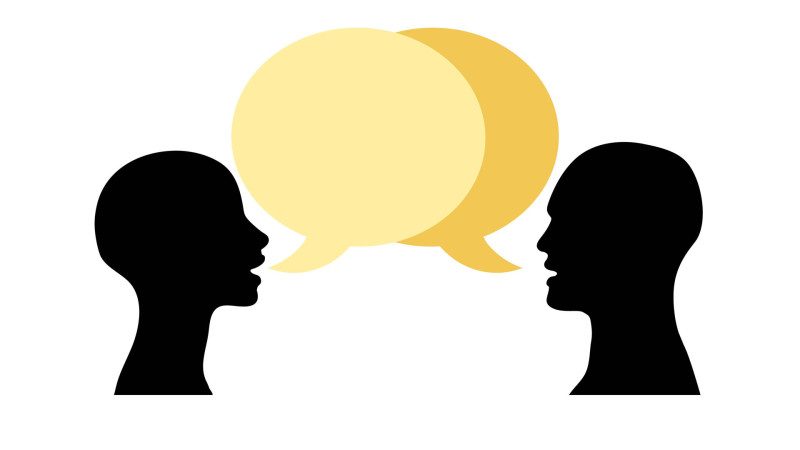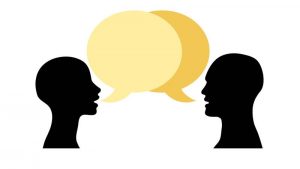
 How you talk to your customers can make a big difference in how successful your brand is. We have so much data available today. Customers are hyperconnected and able to tell us exactly what they want, when they want it and where they want it. This has ushered in an era where customization and personalization have become key elements of many a brand strategy.
How you talk to your customers can make a big difference in how successful your brand is. We have so much data available today. Customers are hyperconnected and able to tell us exactly what they want, when they want it and where they want it. This has ushered in an era where customization and personalization have become key elements of many a brand strategy.
We know what to say to who to motivate them to buy our products, use our services, support our causes… whatever the brand’s intent. However, there is one simple part of this customization/personalization process that gets overlooked. It’s the actual language you use when talking to your customers and perspective customers.
Are you speaking to your customer in their own voice?
 We can use our data to segment our customers by demographics and psychographics. But that’s only part of the picture. You need to look at how each group actually talks. Using the same types of words, tones and even slang can not only put your customers at ease, but it helps build trust in your brand and builds a stronger connections. We all want to relate to brands that sound like us.
We can use our data to segment our customers by demographics and psychographics. But that’s only part of the picture. You need to look at how each group actually talks. Using the same types of words, tones and even slang can not only put your customers at ease, but it helps build trust in your brand and builds a stronger connections. We all want to relate to brands that sound like us.
According to an article in Martech Today on the hyperconnected customer experience, “Personalization goes beyond brand awareness, and organizations should think deeply about how they approach persona marketing. Segmentation is a good start, but it’s not enough.” It goes on to say, “Test different marketing messages to different groups of customers and put yourself in your customer’s shoes.” I would add, put yourself in their ears, too.
Creating that customized message and tone.
 How does this work? Say you have a retail client with stores in vastly different markets. In one market, the unemployment rate is high, average income is down and research shows the biggest concern with making a major purchase is can they get financed and can they afford the monthly payments. So, from a messaging standpoint, connecting to the customer is about assuring them you have a finance offer that is a good deal and you have financing options that will work with those who are hard to finance. You also want to talk about low monthly payments rather than a low overall price.
How does this work? Say you have a retail client with stores in vastly different markets. In one market, the unemployment rate is high, average income is down and research shows the biggest concern with making a major purchase is can they get financed and can they afford the monthly payments. So, from a messaging standpoint, connecting to the customer is about assuring them you have a finance offer that is a good deal and you have financing options that will work with those who are hard to finance. You also want to talk about low monthly payments rather than a low overall price.
That’s the message. But, how do you deliver it in a tone that resonates with this customer? Research showed that a strong hard-hitting retail tone helps give them the confidence they were getting a good deal and should act now. Yet, we also needed to sound understanding when delivering the finance options message – to talk in a manner that let them know we understand their situation, will help them deal with it and don’t look down on them for needing an alternative finance plan.
Conversely, in a different market that was a college town, with a much more upscale and fashion-conscience customer base, the main concern was whether we provide the latest fashion trends and had the right products to match their taste level. Price and financing were secondary to this group. So the language we use and the tone of the messaging to this group needs to be different and talk in terms of understanding fashion and style – connecting with them on a more intellectual level.
Dialect is important too.
 People want messages from brands that sound like them. This can be as simple as using the right tone for their area of the country. People in different parts of the country have different accents and use different words for things. Take soft drinks. Here in Michigan we call it a pop. Other parts of the country call it a soda. Parts of the South call it a “Coke” – knowing the right words that your customers use helps you be more authentic. Same goes for regional voices – an announcer with a Midwestern nasal tone isn’t going to play well for a company in the South, for instance.
People want messages from brands that sound like them. This can be as simple as using the right tone for their area of the country. People in different parts of the country have different accents and use different words for things. Take soft drinks. Here in Michigan we call it a pop. Other parts of the country call it a soda. Parts of the South call it a “Coke” – knowing the right words that your customers use helps you be more authentic. Same goes for regional voices – an announcer with a Midwestern nasal tone isn’t going to play well for a company in the South, for instance.
Dialect differences are just as important when doing non-English languages too. For instance, if your customer base has a lot of Spanish-speaking customers, it’s a good idea to talk to them in Spanish. A Media Post article on Marketing to Spanish Speakers sites a Facebook IQ study by the Latinum Network that says, “Latino customers don’t want English-to-Spanish translations online. They want native Spanish messages that reflect their culture, and they want them delivered by native Spanish speakers.”
Using native Spanish speakers is just the beginning. You also need to make sure you are using the right dialect. We were doing Spanish speaking marketing for a company in Chicago. The client had found a spokeswoman they really liked to be in their commercials. The problem? She was from Puerto Rico and the majority of Hispanics in Chicago are of Mexican decent. The dialects are different. They could tell the dialect of the spokesperson was not the right dialect and we had to work with her to make sure she spoke in the right dialect for the market.
Getting it Right
 There are many other factors in making sure you talk to your customers in an authentic voice they can relate to. The age of your customer, the education, the region they’re from, the experiences they have and a whole lot more. Once you’re identified the customer base you’re talking to, monitor their online chatter or talk to them in person, if you can, so you can get a feel for how they speak. Getting the right tone will make your connection stronger and improve your business overall. So, whether it’s for your marketing messages or your content development – talking the right talk is just good brand strategy.
There are many other factors in making sure you talk to your customers in an authentic voice they can relate to. The age of your customer, the education, the region they’re from, the experiences they have and a whole lot more. Once you’re identified the customer base you’re talking to, monitor their online chatter or talk to them in person, if you can, so you can get a feel for how they speak. Getting the right tone will make your connection stronger and improve your business overall. So, whether it’s for your marketing messages or your content development – talking the right talk is just good brand strategy.
 Mike McClure, talking the talk.
Mike McClure, talking the talk.






